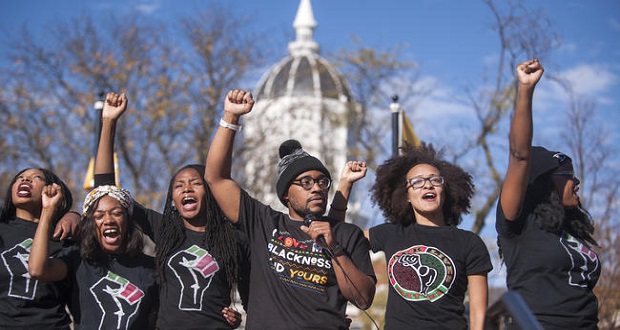
One of the most common pitfalls organizations continue to make as it relates to creating more equitable and inclusive workplaces is targeting quick wins … and then calling it a day. Making virtue-signaling posts on social media isn’t going to improve the disparate experiences of staff at your organization, nor increase the diversity of your workforce. Understandably, people want outcomes, not more unkept promises and hollow ideals espoused.
One powerful way to move toward racial justice at work is to transform your organization’s systems of accountability. For many BIPOC employees, accountability at work looks vastly different than their white counterparts’ experiences. Grace, understanding, and patience aren’t extended to BIPOC employees the same way they are freely given to white employees. Additionally, for many Black folks specifically, grace is afforded to their lighter-skinned siblings without as many strings attached and without as much reservation. White employees are often able to make mistakes with little to no accountability regardless of whether they commit to understanding or behavioral change. According to a study by the National Bureau of Economic Research, the performance of Black workers is scrutinized more closely than the performance of white workers; as a result, Black workers may only be retained if they display a higher standard of performance than is required of white workers. Essentially, Black employees are expected to out-perform their white counterparts at a minimum, or they may be held accountable vis-à-vis termination of their employment.
For racial justice to be present at work, systems of accountability must be made equitable, and we will know our systems of accountability are equitable when — as I once heard Mary-Frances Winters share — we can stop predicting the outcome based on race.
Start by Assessing the Status Quo
In order to create transformative systems of accountability at your organization, assess your organization’s current systems of accountability, taking into consideration both the formal and informal (i.e., unspoken) guidelines and components. The informal and unspoken systems of accountability are significantly more important than what is written on paper.
For example, let’s say someone on your leadership team receives a complaint that a white employee said a racist statement at a meeting where there were several BIPOC employees present. How might they respond? Would they 1) do nothing, 2) privately tell the white person to not say stuff like that at work, 3) write the white person up, 4) put the white person on a performance improvement plan, 5) fire the white person, or 6) something else?
What does the repair with the BIPOC employees who were present at the meeting look like? Are they kept informed of what happens to the white person? Or are they told they will not be able to be informed because of employee privacy? Are they told to stay away from the white person who made the comment? Are they told this incident was just a misunderstanding and the white person didn’t intend any harm by their comment? Is the whole agency mandated to go through a diversity, equity, and inclusion training without any conversation with the BIPOC employees who were impacted?
Does your organization have a policy that outlines what the organizational response will be in the above situation? Does your organization have a policy other than a generic EEOC statement regarding discrimination? Does your organization have clearly written and accessible value statements that outline how harmful behavior is not aligned with the organization’s mission and/or vision? Does your organization have a universal core competency that includes demonstration of equitable and inclusive practices?
There are many ways organizations hold their employees accountable both formally and informally, however, and more often than not, practice does not always align with policy. Different leaders respond differently, so ask direct reports what their experiences are regarding being held accountable.
Conduct exit interviews and ask folks about their experiences —` ask them what and who made their job difficult; ask them if they felt they received the proper support, coaching, and mentoring they wanted; ask them if they felt like they were held to fair standards of accountability compared to the rest of their team; ask them if and how they had clear expectations established and upheld by their supervisor; ask them about their relationship with their supervisor; and ask them if they felt like they could be their whole selves with co-workers. Perhaps by looking at who — demographically speaking — your organization is disproportionately losing, you may learn something.
Most importantly, believe what current and exiting employees tell you. There is a myriad of ways in which organizations dismiss feedback because it is inconvenient or damning. Remember that all data is valuable and tells you something. The process of reviewing your organization’s current accountability practices will more than likely reveal inconsistencies and uncertainties, and may even present you with specific scenarios necessitating transformative accountability.
Give Your Organization Fuel to Keep Going
After learning of your organization’s hard-to-swallow truths, sustain the effort of creating transformative systems of accountability by asking your whole organization why a transformative system of accountability is relevant, necessary, and important. Ask:
- Why is a transformative system of accountability at your organization a priority focus?
- What does your organization have to risk in pursuing this framework and what does your organization have to gain?
- What is the collective vision?
In moments of exacerbation, frustration, or doubt, come back to why your organization is taking this approach to accountability. Create posters, send out emails, make frequent mention in meetings, or whatever you need to keep your “why” top of mind.
Prerequisites for Transformation
In order for organizations to transform their systems of accountability into equitable systems, there are some prerequisites which must be met. There must be a sincere belief in people’s capacities and an assumption that people are ready to participate in transformative systems of accountability. Transformation is not even faintly possible if anyone is starting from a paternalistic mindset. Sincere readiness for accountability only comes as a result of trust. As someone much wiser than me once said: trust is giving someone the benefit of the doubt and psychological safety is the belief that they will give it to you in return. If a transformative system of accountability is to be created within your organization, these prerequisites must be a reality — not hanging on the thread of hope, but safely supported within the bedrock of your organizational culture.
Together, Dream of Transformation
Justice is about repairing harm and accountability is a process for seeking justice. Transformative accountability requires radical empathy and vulnerability. Start by cultivating an organizational culture wherein this is understood and valued.
There is no one-size-fits-all approach to creating transformative systems of accountability in organizations nor should there be. There are many models for transformative justice applied in different settings currently accessible online and in print. Review the available literature. Select components of differing models which feel applicable and appropriate to then create a modified version for your organization. This may require hiring consultants who have expertise in transformative justice. As an organization, collectively decide what equitable accountability processes looks like and write it into policy, as well as onboarding training curriculum. Hold people accountable for sustaining transformative accountability in their position’s core competencies and annual performance evaluations.
The most important component to creating transformative systems of accountability is that you do it together. Dream of transformation as an organization together and through the process you will not only have created the policy and procedure, but also the culture wherein justice is pursued.


















